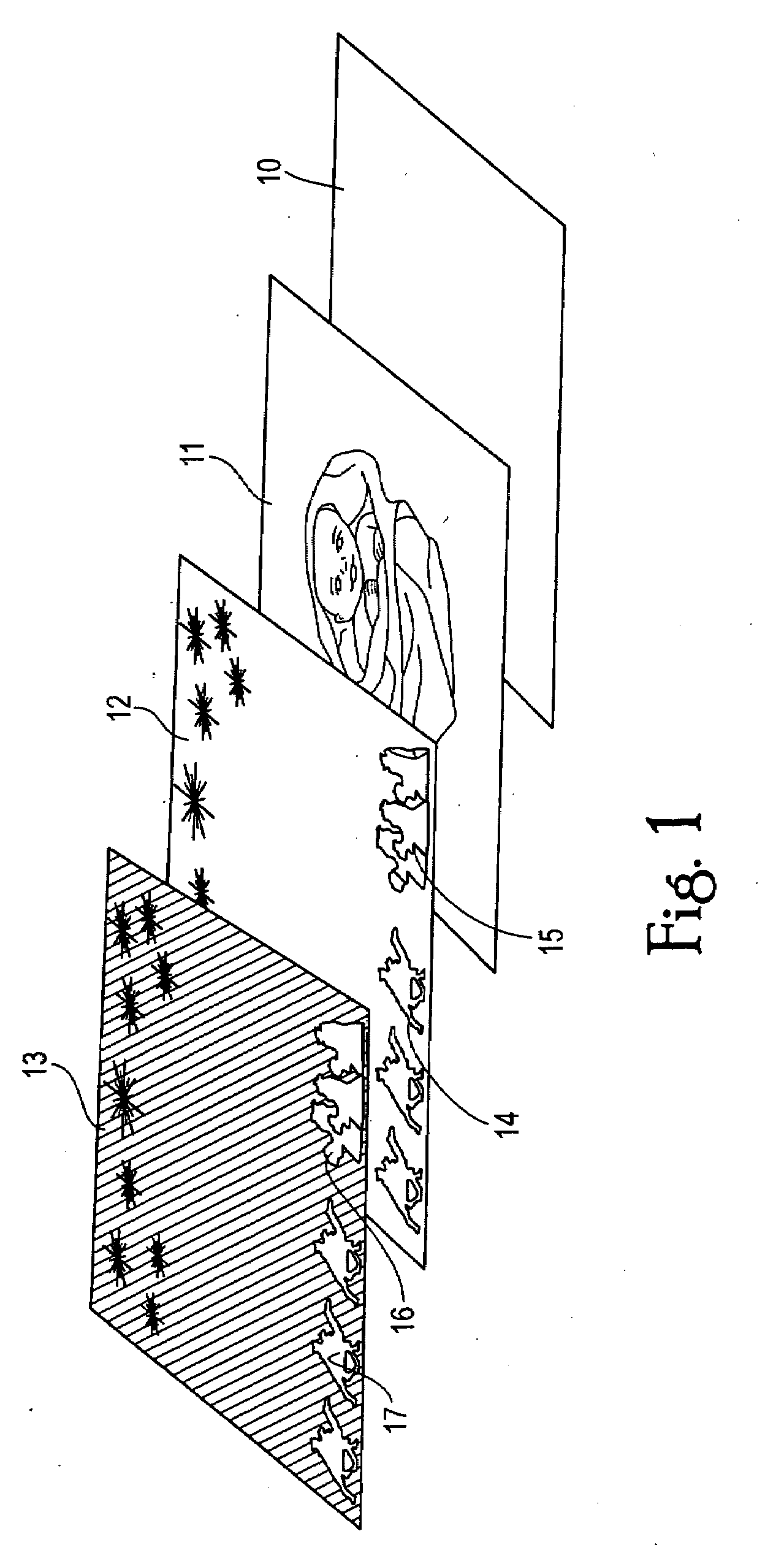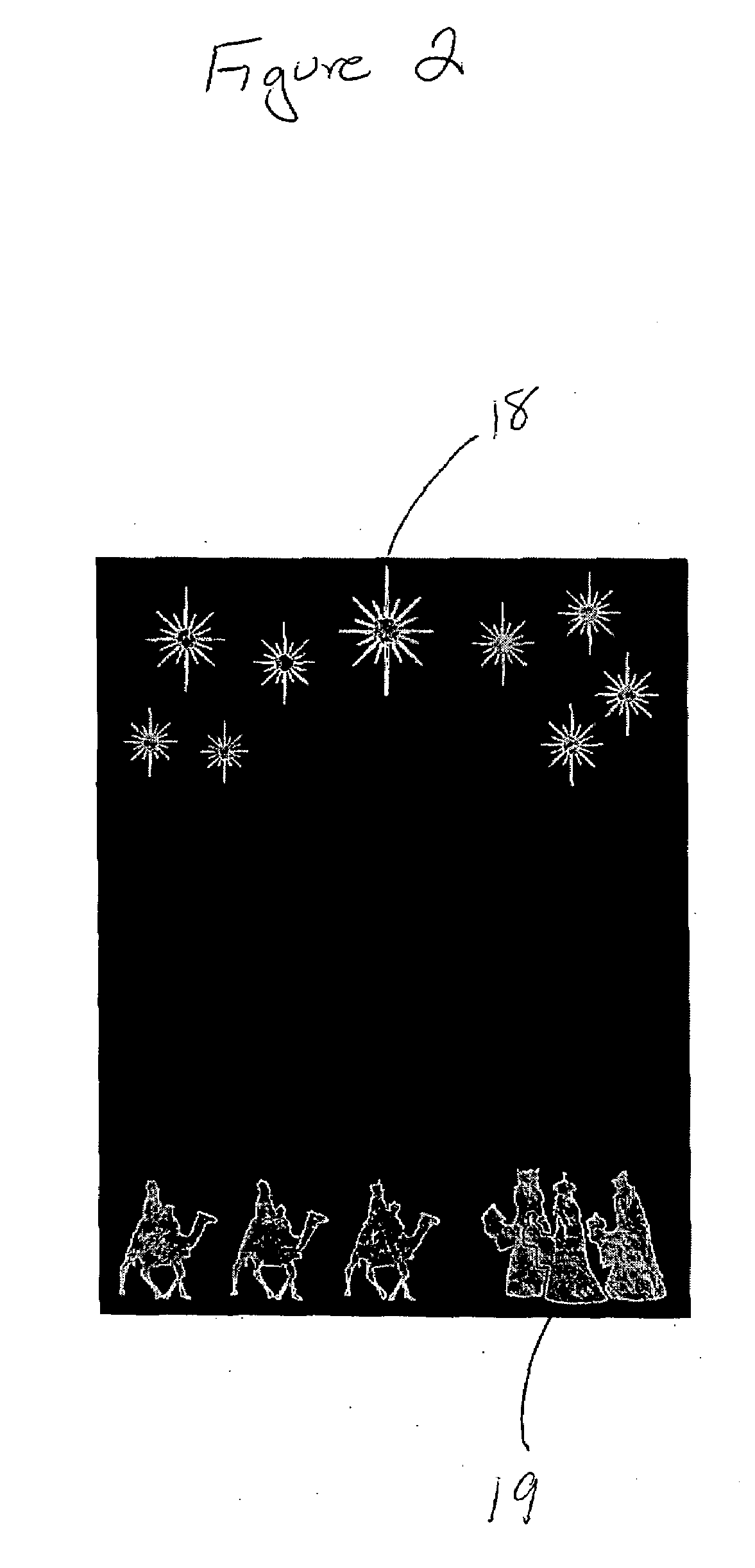Thermochromic display assembly
a display and thermochromic technology, applied in the field of display assembly, can solve the problems of no image, dark and unappealing image, and display that is fully aesthetically appealing at both hot and cold states
- Summary
- Abstract
- Description
- Claims
- Application Information
AI Technical Summary
Benefits of technology
Problems solved by technology
Method used
Image
Examples
Embodiment Construction
[0050]We have described display arrangements that change appearance upon changes in temperature. Our display arrangements uniquely combine both thermochromic and non-thermochromic inks that visualize colors, patterns and images at lower temperatures, and at higher temperatures show a different set of colors, patterns and images as the thermochromic inks change color or become transparent—thus, the images vary at cold state and hot state temperatures. These display arrangements and display assemblies are visually pleasing at all temperatures, simple to use, and interesting to observe change appearance.
[0051]The term “display arrangement” is used in connection with our invention to denote a layered composite structure or article which conveys a visual design, message or graphics image, including any sort of a pattern or picture. As is apparent from the examples and our description, there is a broad range of possible visual designs and effects that can be displayed, both in the cold st...
PUM
| Property | Measurement | Unit |
|---|---|---|
| temperature | aaaaa | aaaaa |
| temperature | aaaaa | aaaaa |
| temperature T2 | aaaaa | aaaaa |
Abstract
Description
Claims
Application Information
 Login to View More
Login to View More - R&D
- Intellectual Property
- Life Sciences
- Materials
- Tech Scout
- Unparalleled Data Quality
- Higher Quality Content
- 60% Fewer Hallucinations
Browse by: Latest US Patents, China's latest patents, Technical Efficacy Thesaurus, Application Domain, Technology Topic, Popular Technical Reports.
© 2025 PatSnap. All rights reserved.Legal|Privacy policy|Modern Slavery Act Transparency Statement|Sitemap|About US| Contact US: help@patsnap.com



